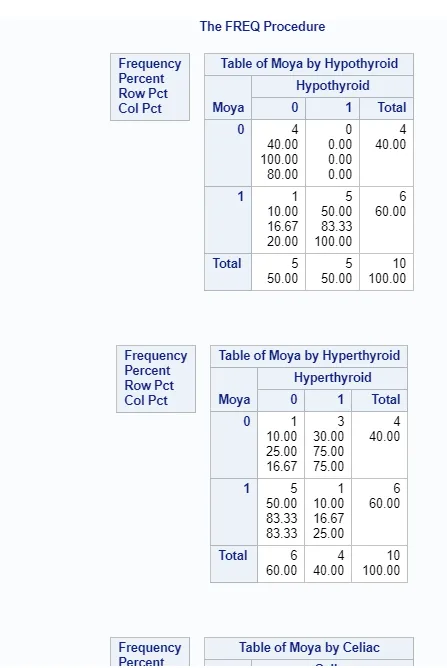我有一个患者数据集,看起来像下面的表格,我想知道哪些疾病会同时出现并最终制作一张热力图。我使用了PROC FREQ来制作这个列表,但是这样处理太费时间了,因为它给出了每种组合(成千上万种)。
Moya Hypothyroid Hyperthyroid Celiac
1 1 0 0
1 1 0 0
0 0 1 1
0 0 0 0
1 1 0 0
1 0 1 0
1 1 0 0
1 1 0 0
0 0 1 1
0 0 1 1
proc freq data=new;
tables HOHT*HOGD*CroD*Psor*Viti*CelD*UlcC*AddD*SluE*Rhea*PerA/list;
run;
最终我希望能够得到一堆交叉表格,如下所示,以便我可以看到每种组合有多少患者。显然,手动复制粘贴每个变量是可能的,但是否有任何快速查看或自动化此过程的方法呢?
proc freq data=new;
tables HOHT*HOGD/list;
run;
proc freq data=new;
tables HOHT*CroD/list;
run;
proc freq data=new;
tables HOHT*Psor/list;
run;
谢谢!

%gentabs()的参数。 - Len Greski